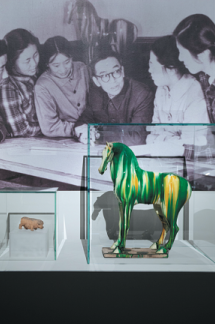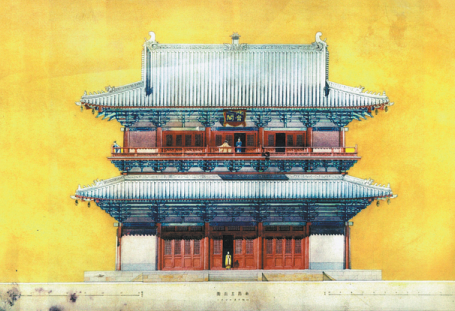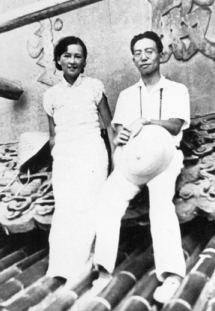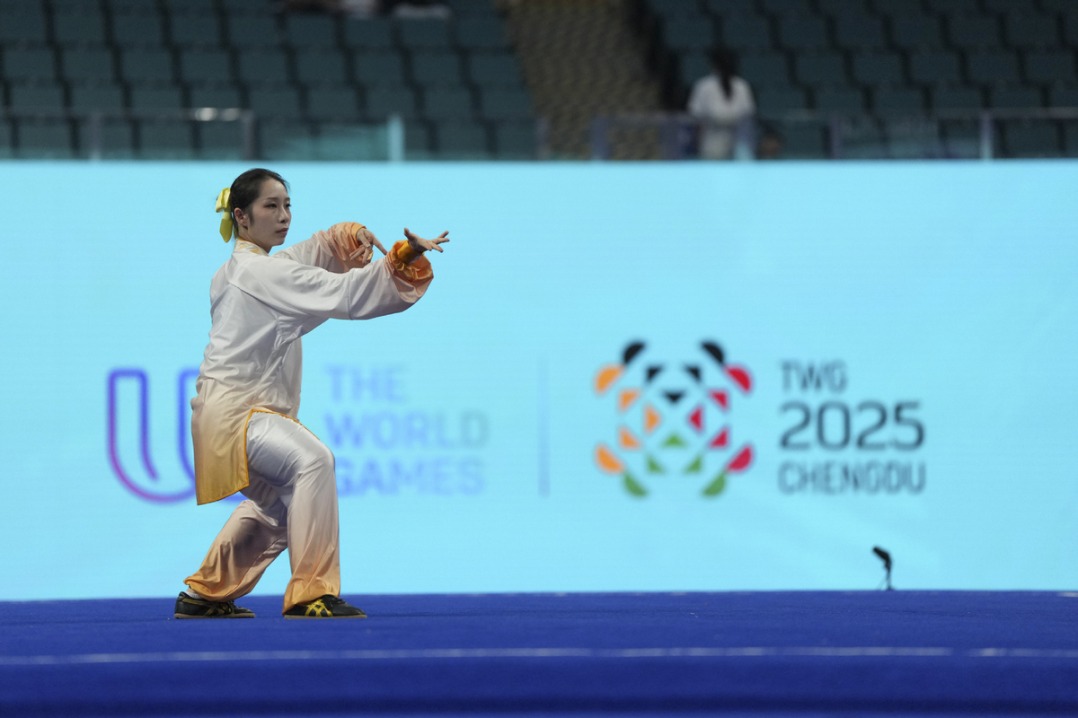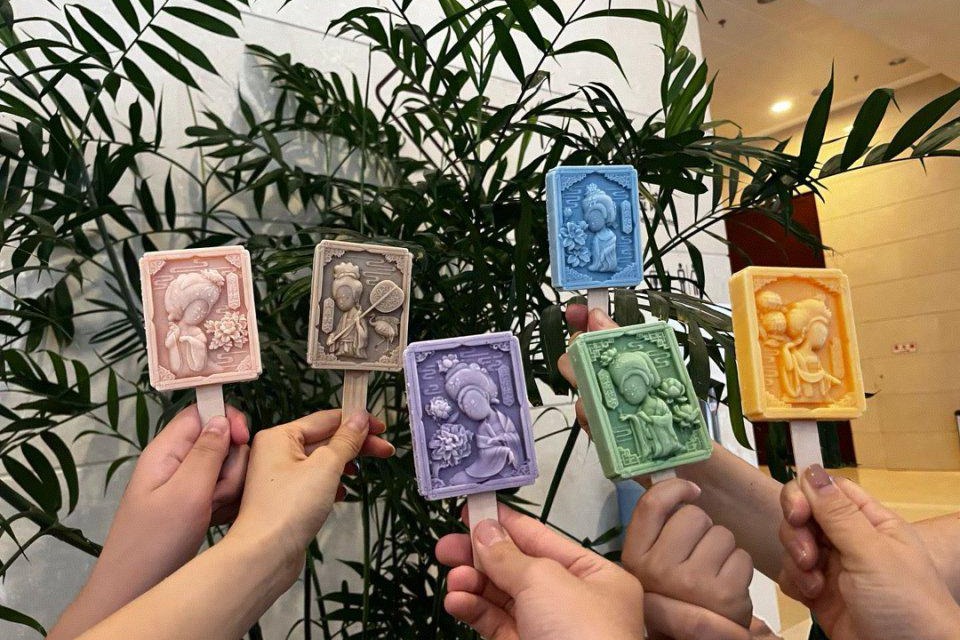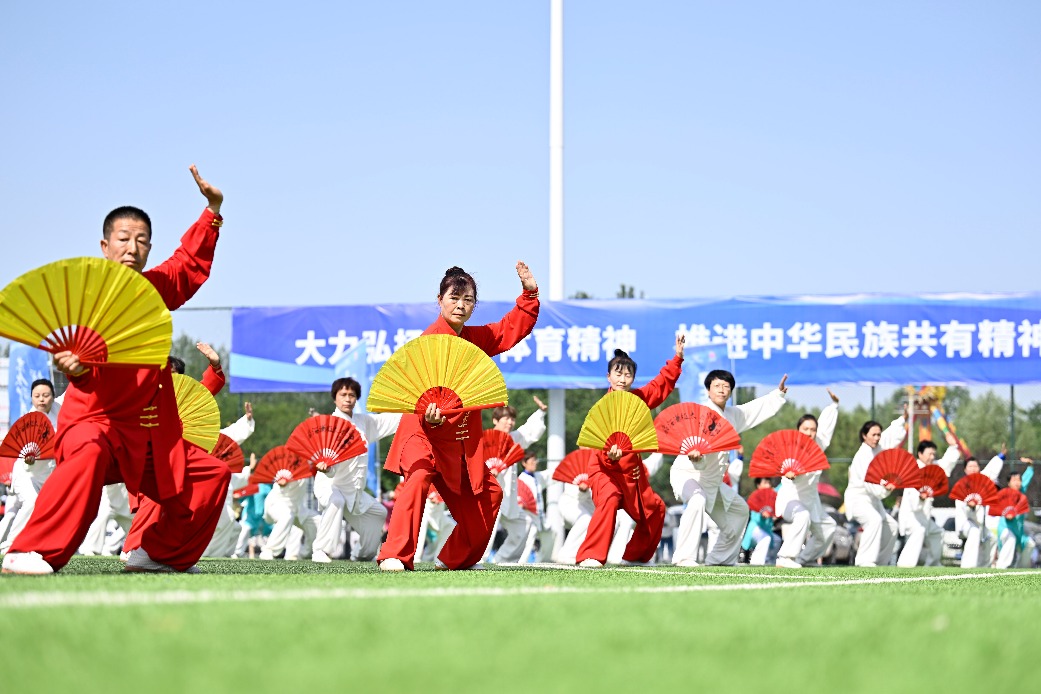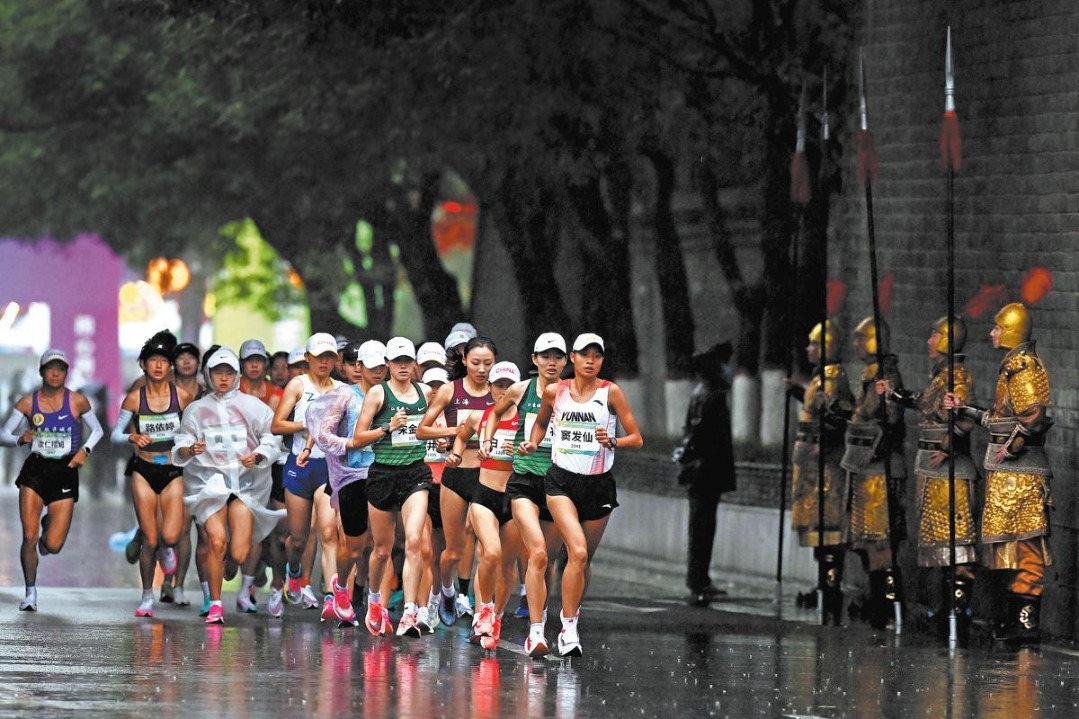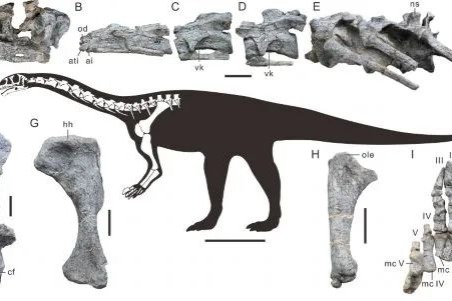Building on tradition
Exhibition celebrates Liang Sicheng, pioneer of modern Chinese architecture, Lin Qi reports.

Visitors to the exhibition, Liang: The Overarching, will likely sense a serene atmosphere. The show, which is being held at the Tsinghua University Art Museum in Beijing through Oct 20, to observe the 120th anniversary of Liang Sicheng's birth, has drawings, books and historical documents inside dozens of low-set showcases.
The audience needs to peer downward or even squat to get a detailed view of some exhibits.
Su Dan, the curator, says it makes people feel like being in a memorial park, having to read epitaphs on gravestones to understand Liang's accomplishments.
Liang, hailed as "the father of modern Chinese architecture", designed tombstones for many people, including Wang Guowei, a historian and scholar; his father, Liang Qichao, an intellectual; and Lin Huiyin, his wife and longtime collaborator.
The arrangement of the cases in lines "creates a unique spiritual space" in which people can talk and pay respect to Liang Sicheng, says Su.
The exhibition includes Liang Sicheng's manuscripts, photos and prints, as well as architectural models, to show his contribution to, and thoughts on, modern Chinese culture and education, as well as the setbacks he encountered and his regrets, allowing viewers to reflect on the past and envision the future.
Liang Sicheng was born in Tokyo, and died in Beijing in 1972. He was at the crossroads of Chinese and Western cultures. He strove to find the path to modernize Chinese architecture and urban planning, while preserving values of traditional culture and aesthetics.
He enrolled in the University of Pennsylvania in the 1920s where he received bachelor's and master's degrees in architecture. He was later admitted to Harvard University as a graduate student of art history.
After returning to China in 1928, he traveled extensively to remote counties to survey and map centuries-old architecture.
He discovered the Zhaozhou Bridge, a Sui Dynasty (581-618) structure located in today's Hebei province, identified as the oldest open-spandrel stone bridge in China; and the east hall of Foguang Monastery that was built during the Tang Dynasty (618-907), seated on Wutai Mountain in today's Shanxi province.
At the University of Pennsylvania, he was immersed in a boom of fine arts-style architecture. Meanwhile, he devoted time to deciphering the secrets of classical Chinese architecture by studying Yingzao Fashi ("state building standards"), considered the oldest extant Chinese technical manual on buildings and originally published in the early 12th century.
He authored books on the history of Chinese architecture and established the architecture department at Northeastern University in Shenyang, Liaoning province, and served as the first dean of Tsinghua's department of building engineering, helping to lay the foundations of the modern Chinese architectural education system.
Su, also deputy director of the Tsinghua museum, says the exhibition shows the working methods of Liang Sicheng, especially as some of his major accomplishments were made at a time when the country was experiencing great difficulties.
"At the heart of the exhibition is a Chinese intellect's serious attitude toward life and work, and being indifferent to fame," Su says.
"But people face a different situation today. They live with temptations, and they are in a race against time for success, but often end up with few gains. This exhibition allows people to reexamine themselves."
The exhibits are on loan from several institutions at home and abroad. Many are on public view for the first time, covering different times in the architect's life.
For example, some show that Liang Sicheng developed interest in art, music and sports in his youth.
While at the Tsinghua College, a preparatory school attended by Chinese students who would be sent to study in the United States, he was a member of the college art club and chorus, an editor of the college magazine and led the college marching band. He once won the first prize in a high-jump competition.
His quest to learn new things and his cross-disciplinary passion contributed to his field research in his later years.
He also trained his students at Tsinghua to be architects with an aesthetic consciousness.
The exhibition displays a Tang Dynasty glazed ceramic horse and a Han Dynasty (206 BC-AD 220) ceramic pig that Liang Sicheng used as teaching aids. He told his students that only when they appreciated the beauty of such artifacts, they would qualify for graduation.
His time in the US is also part of the exhibition, with photos taken while he was at universities there, displayed alongside a duplicate copy of his application for Harvard's master's program in 1927, provided by Harvard CAMLab.
For "date and place of birth", after writing down "Tokyo, Japan", he added "but a Chinese citizen"; under previous works, he wrote that he had done "a short research on the city wall of Peking and Yuan Ming Yuan, the famous imperial garden".He was especially interested in the history of Beijing, where he lived for decades.
His feelings for the city and its ancient architecture, and how he envisaged a modern Beijing are evident in an article he published in 1951, titled An Incomparable Masterpiece of Urban Planning. The manuscripts, now in the collection of Tsinghua University Archives, are also on show.
Liang Sicheng's passion for old buildings is integrated with a devotion to decoding the architectural grammar of Yingzao Fashi and to understanding the underlying aesthetics and philosophical views. It began when he received a copy of the book from his father in 1925, while he was in the US. A printed copy of Liang Qichao's words to Liang Sicheng on the title page, along with an older edition of the book, is also on show.
Su, the exhibition curator, says this gift from his father played a critical role in Liang Sicheng's career orientation, as he gradually focused on the history and preservation of Chinese architecture and city buildings, as well as the development of a "modern, but Chinese" theory in architectural design.
"The book embodies Liang Qichao's wish that his son explore and explain the traditional culture of China."
A video at the exhibition plays interviews with winners of the Liang Sicheng Prize, an architectural award in China.
Zhang Jinqiu, an eminent architect and a former student of Liang Sicheng at Tsinghua, says her late teacher's endeavor to carry forward the traditional cultural spirit stemmed from his love of the nation and its people.
She says she led a team to survey the Foguang Monastery in 1981 and, at the time, she realized that "people like Liang Sicheng and Lin Huiyin have noble virtues and clear goals they would strive for, and this is the greatest happiness for them".
In a 1944 article titled Why Study Chinese Architecture?, Liang Sicheng wrote: "Knowing others as well as themselves, learning something fresh from reexamining something old, architects already equipped with scientific technology are further aided by the knowledge and taste of our own nation, and their creative power will be strengthened before they realize it. Herein lies the most extraordinary significance of studying Chinese architecture."


